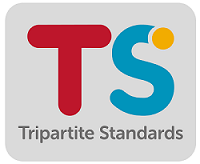Diversity is a way of life, and we know intuitively that it matters. Many studies have showcased and proved the benefits a diverse workforce can bring to organisations, and the meteoric rise of conversations around the concept further confirms it.
Amidst the rising importance of workplace diversity, social media showcases some discussions around racial injustice, systemic racism, and biases. These conversations keep reintroducing millennials to the importance of racial diversity in the workplace – a term that constitutes the largest chunk of the term diversity.
| | Today, workplace diversity & inclusion (D&I) goes beyond the dialogue of gender, race, and ethnicity and is more than policies, programs, or headcounts. |
According to a survey done by Glassdoor, 67% of job seekers consider workplace diversity as an important factor when considering employment opportunities, and more than 50% of current employees want their workplace to do more to increase diversity.
What is Racial Diversity?
“Racial diversity is the acknowledgment and celebration of differences between racial groups. Diversity recognizes and values differences within and between racial identities, noting the intersectionality of many groups, including ethnicity, gender, age, national origin, religion, disability, sexual orientation, socioeconomic status, education, marital status, language, and physical appearance. It also involves different ideas, perspectives, and values.” – Howard University School of Law Library.
In simpler terms, racial diversity in the workplace refers to the range of similarities and differences individuals possess that make them unique. It enriches the work culture and enables employers to access a wider pool of talented professionals.
Importance of Racial Diversity in the Workplace
The definition of a workplace being nothing more than a place where a person comes and works from nine to six is obsolete. Present-day employees want to work in an inclusive place where they are accepted irrespective of their racial identities and racial groups. When an organisation brings people together from all walks of life, it’s amazing what can be accomplished.

Nowadays, organisations promote racial diversity and let people know they acknowledge the concept through social media platforms.
With diversity and inclusion gradually becoming an integral part of recruitment practices, employers have started focusing more on hiring a diverse workforce.
Various factors contribute to letting recruiters incorporate diversity & inclusion into the workplace.
How to support & promote Diversity & Inclusion at work?
#1. Bring Leaders to the Forefront
Promoting diversity & inclusion is a complex issue as organisations have to deal with deep-seated beliefs and implicit & explicit biases present in the workplace culture. Notwithstanding, when leaders drive change, it doesn’t solely revolve around impacting employee attitude. In fact, it involves self-reflection as leaders must first identify and understand their own feelings towards a racially diverse workforce and what they will face working with them. This will help them assess their leadership style and create opportunities to promote diversity.
You can, for instance, ask them to be a spokesperson for overcoming racial discrimination or mentor racial groups within the organisation. Alternatively, you can also show them the benefits of having a diverse workforce.
#2. Offer Feedback Channel
In her book Diversity in the Workplace, Bärí A. Williams presents numerous interviews with business leaders on how to battle unconscious bias and provides examples of successes that were lifted up by diversity.
This success, in real life, can only come if we start being vocal about race in the workplace. To speak up, you should first acknowledge that talking about race can bring awkwardness, and you must validate others’ feelings to remove their discomfort. Be open to hearing and learning from others’ experiences. Listen more to others and be genuinely interested in creating a better workplace for everyone.
#3. Revisit the Hiring Practices
HR teams must closely check the recruitment process and see how they can make their organisation completely inclusive. Recruiters must be open to receiving applications from candidates belonging to different races. Additionally, the hiring panel must also comprise interviewers from different racial groups, which will prevent bias from happening during job interviews.
Even the job descriptions should seem to welcome racial diversity and must avoid using phrases related to race. Such recruitment practices will help you have a more racially-diverse workforce.

Recognised for Our Progressive Employment Practices
At CGP Singapore, we have recently adopted Tripartite Standards that comprise a set of verifiable, actionable employment practices in a specific area of employment that employers can publicly commit to adopt and implement at their workplaces.
#4. Conduct Training
Racial equity is an underrated term, but it contains a deep-rooted meaning. By promoting and creating employee training programs, organisations can boost racial diversity within the work environment. Present work cultures make it imperative to invest in training people across the organisation to promote racial diversity.
According to reports, a 1% improvement in racial diversity similarities between upper and lower management boosts company efficiency by $729 to $1590 per year per employee.
There must be some upskilling at the employee and organisational level to prepare them for racial equity and racial diversity.
#5. Formulate & Implement an Anti-discrimination Policy
An anti-discrimination policy must firmly establish that discrimination is not tolerated in the company. The policy must set out clear expectations and desired behavior in the workplace. Besides, there should be a defined complaint procedure to make it easy for employees to raise their concerns that can be further investigated.
Doing this brings inclusion to the organisation and creates a work environment that compliments racial diversity.
An Insight into Racial Diversity in Singapore
Singapore is among the most innovative and prosperous hubs in the world, with a high concentration of immigrants. Singapore achieved independence in 1965, and its founding fathers instituted measures to promote racial and ethnic unity.
This South-East Asian island nation is popular for its technology-ready aspects and being multicultural, with a mix of people of Chinese, Malay, and Indian descent. The population consists of different religious faith groups, including Buddhists, Christians, Muslims, and Hindus. Singapore’s ethnic and religious diversity has resulted in relative racial harmony in society and the corporate world. Moreover, it has set an example for other nations to learn.
Conclusion
Racial diversity in the workplace is pivotal for both parties– employers & employees. According to a report, racially and ethically diverse companies perform better financially. Such companies are 35% more likely to outperform their respective national industry medians’ financial returns.
And the statistic that proves why racial diversity is an important aspect for employees is:
As per the Deloitte report, 83% of Millennials actively engage in work when companies foster a more inclusive work environment.
A racially diverse environment fosters progressive change and collaborative team works, and the organisation should head in the right direction. Not as a way to match what society asks but because it brings ample benefits and the way it impacts the environment.
FAQs
1. What are the different types of diversity in the workplace?
There are 4 types of diversity in the workplace, which include:
-
Internal diversity: Internal diversity refers to situations that a person is born into. In other words, these things are the ones that a person doesn’t choose for himself and are impossible to change. The examples are race, ethnicity, age, national origin, cultural identity, gender, and physical ability.
-
External diversity: This refers to the characteristics that other people and surroundings heavily influence. However, a person can change these aspects.
-
Organisational diversity: Organisational diversity refers to the differences between people assigned to them within a workplace and distinguishes one employee from another.
-
Worldview diversity: Worldview diversity changes with time and includes internal, external, and organisational characteristics.
2. Is racial diversity important in the workplace?
Yes. Racial diversity is important in the workplace as it boosts employee engagement and productivity. It makes the workplace comfortable for everyone across the organisation.
3. What are the three ways to handle diversity?
The three best ways to handle diversity are:
-
Highlighting personal uniqueness and appreciating individual differences.
-
Developing policies adhering to company goals that are accessible for everyone to review & understand.
-
Continuing to evolve with employers, understanding changes, adjusting existing policies, and working on new diversity and challenges.








